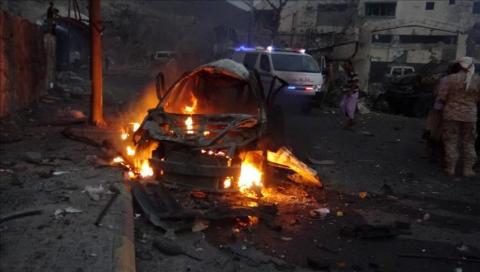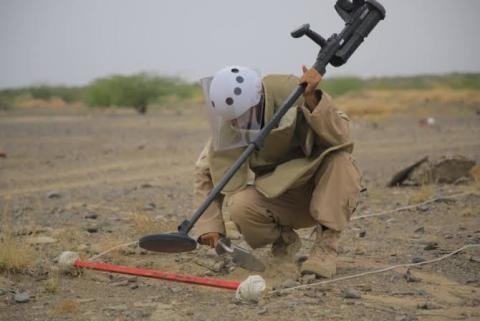Refugee Crisis in Yemen and Its implication on Future World relations


The refugee crisis has been an important part of the non-traditional security threats in recent years. There has been a lot of efforts to define and understand refugees and the crisis that led to migration to the different countries in recent years. According to the UNHCR refugees are “someone unable or unwilling to return to their country of origin owing to a well-founded fear of being persecuted for reasons of race, religion, nationality, membership of a particular social group, or political opinion.” This definition can be connected to the aspect of the displacement of the societies from their home nation. This has been in contention in the International realm with special reference to the MENA region i.e. the Middle East and North Africa region which has seen a different understanding of the refugee crisis and also the increase in the number of refugees. The following paper will look at this aspect of the Refugee Crisis in Yemen and look at how UNHCR has been functioning in solving and rehabilitation of the refugees from Yemen. This will also be a test of Liberalism as there will be an analysis of the effectiveness of the institution UNHCR on the Crisis and also on the larger question of whether the international Institutions are effective in treating with the Non-Traditional security threats.
History of Yemen Civil War and its Aftermath
The refugee crisis in Yemen was sparked by the Yemen Civil War of 2015. The history of the Civil War goes before 2004 with the formation of the Houthi Rebels who were looking for greater autonomy over the Northern Province of Saada which used to be their territory. This organization was critical of the presidency of Abdarbuh Mansur Hadi who was against giving the Rebels a greater Autonomy over the region. This led to the capture of the Sana by the rebels in September 2014 and the house arrest of the President and other Ministers by the rebels. This led to the President fleeing to Saudi Arabia which led to the operation ‘Decisive Storm’ by the Saudi-Led Coalition backed by Saudi and other GCC countries. The operation was aimed at destroying the rebel stronghold in the region and also to reinstate the Government of Mansur Hadi. The operation was successful and led to the destruction of the Houthi Rebels and the capture of Sana, Capital of Yemen. The forces initiated other operations called ‘Renewal of Hope’ which aimed at the post-war reconstruction of Yemen. The conflict had far-reaching effects in the support for Sectarian violence in the Country. The conflict also saw a modern cold war between Saudi Arabia and Iran and this led to the arrival of ISIS and Al Qaeda in Yemen.
This conflict has created a huge refugee crisis in the region. According to the UNHCR estimates 2.3 Million people were internally displaced as of 14 October 2015. Out of these, around 166,658 refugees moved to the Middle East and North African region as of 1 November. Around 75,758 fled to African Countries such as Djibouti, Ethiopia, and Somalia. This has led to a major crisis in these countries with a huge influx of refugees. But there have been measures taken by these countries and other middle-eastern countries such as Saudi Arabia and Oman which sort to provide basic facilities to these refugees and also education to them.
Work is done by the UNHCR in the Yemen Refugee Crisis
The UNHCR has started the work on the issue with the creation of the Yemen Situation Refugee Response plan in December 2015. This plan outlines the work which needs to be done in different aspects of the migration be it Internal displacement or be it fleeing to the nearby countries of Africa and the Middle East. This plan started with outlining the work done by UNHCR as of November 2015. The work done has been divided into several categories such as
This work included not just the role of UNHCR but other actors such as IOM, host countries such as Djibouti, Somalia, Ethiopia, and other countries. Especially, there was large spending by the UNHCR for the rehabilitation of the refugees amounting to 44,094,750 USD. There also has been a declaration of the Yemen situation as a Level 3 Humanitarian emergency and was given special consideration with the appointment of the regional coordinator to coordinate the working of the UNHCR with other organizations of United Nations such as UNICEF, IOM, IASC, and others.
The work also included seeking complete assistance from other Middle-Eastern countries such as Saudi Arabia and Oman which provided refugees to the Yemen citizens and also made changes to their policies of immigration.
The other aspect of the work done by UNHCR is also addressing the issue in a properly planned manner and was divided into categories such as Djibouti Response Plan, Somalia Response Plan, and Ethiopia Response Plan, and so on. This included a detailed demarcation of the work needed to be done to help the refugees in these countries and also to provide a clear framework for the policy creation in these countries for the restoration of these refugees.
Conclusion
The work done by the UNHCR has been commendable in the issue of the Refugee Crisis in Yemen and the work continues. But according to my further understanding and research the work done has become incomplete especially concerning the safety and rescue of the refugees.
The first reason for this is the increased inefficiency shown by the regional actors on the issue and also the less co-operation shown by the coalition involved in the Yemen Civil War. Even though Saudi Arabia has taken initiative for the rehabilitation of the refugees along with UNHCR but there has been a communal side to this rescue leaving other communities out in the rescue operation.
The second reason is to do with the inefficiency of not only UNHCR but other organizations of the UN to solve the Civil war and also call for peace in the area so that there can be a reduction in the number of refugees arriving in the other countries.
The third reason for this argument is the over-burdening of the refugees in the other host countries especially in Africa which has caused an increase in violence to the refugees and also an increase in Unemployment. Even though there has been an increase in funding to these countries by UNHCR but this has not been used properly for the rehabilitation of the refugees.
Thus, there has been an effort in the rehabilitation and solving of the refugee crisis in Yemen but these efforts are being overturned by selective rescue and also other issues that have reduced the effort done.

Yemeni officials on Monday condemned arrests and prosecutions by the Iran-backed Houthi militia directed against media, journalists and celebrities…

Yemen's warring parties are gearing up for new waves of conflict in 2023 amid a lack of decisive steps towards sustainable peace, adding to the suf…

The UAE will help to recruit doctors and deliver crucial supplies for hospitals in Yemen under a major healthcare drive. The Khalifa bin…